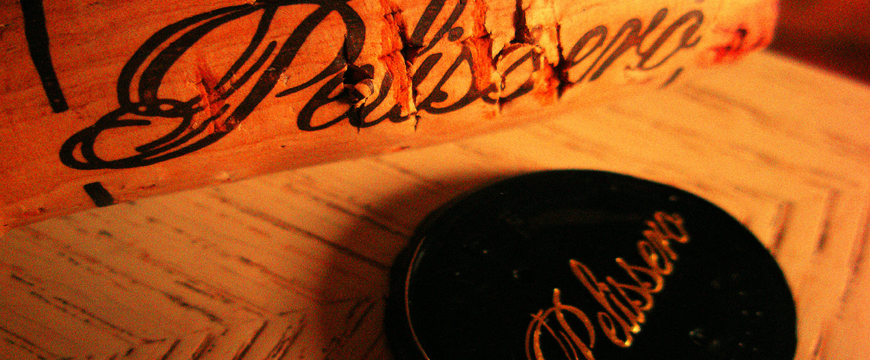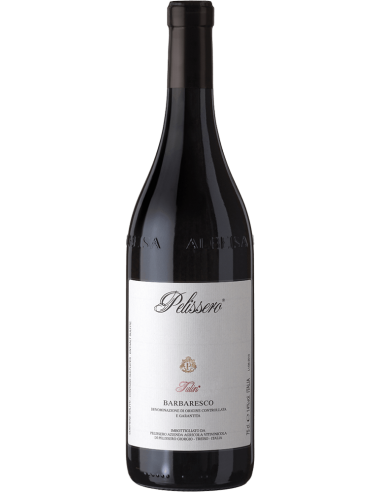-
All Products
TypeWineriesItalyRest of the WorldGreat Wines
- Barolo and its Crus
- Bolgheri
- Bordeaux and the French Bordelais
- Brunello di Montalcino iconic
- Chianti ancient tradition
- Supertuscan the Italian Bordeaux blend
- Syrah Millenary Tradition
- Great International Red Wines
- Great International White Wines
- Amarone in all its elegance
- Pinot Noir from the World
- Timorasso a jewel to discover
-
PROMOTIONS
PromotionsPromotions
-
Red Wines
ITALY Top Selection Red WinesWORLD Top Selection Red Wines
-
White Wines
ITALY Top Selection White WinesWORLD Top Selection White Wines
-
Rosé Wines
ITALY Top Selection Rosè WinesFRANCE Top Selection Rosè WinesWORLD Top Selection Rosè Wines
-
Sparkling
ChampagneItalian Sparkling WinesEnglish Sparkling Wines
- Other Wines
-
Spirits
Whiskey
-
Selections
Great Wines: focus onRare and Iconic WinesHeroic WinesWines to DiscoverAccessories
- Wine Makers
- .
'Tulin' is the name with which since 2001 Pelissero decided to identify, since 2001 vintage, the Barbaresco Annata. After seven years, sustained by the appreciations of public and critics, we have decided to name this wine after the vineyard where the grapes for this wine come from, whose climate, composition of the soil and exposure are of great value.
In local dialect Tulin indicates a small circular metal vessel as commonly used in churches for retention of the melted wax from the candles or distribution of food to the cattle in the stables. A melting pot of spirituality and handicraft, the soul and hands of Vinegrowers. Tulin is pronounced with the accent on the i.
- Product Category
- Red Wine
- Designation
- Barbaresco DOCG
- Grape / Raw material
- nebbiolo
- Vintage or Cuvée
- 2020
- Size
- 750 ml.
- Country
- Italy
- Region
- IT - Piedmont
- Alcohol Content
- 14.5% vol.
- Service Temperature
- 18° - 20° C.
- Suggested Glass
- Large calyx with a long stem
- Food Matches
- Aged Cheese, Game, Red Meat
- Allergens
- Contains sulphites (by sulphites we mean the sulphur dioxide that is added to wine, to preserve it, thanks to its disinfectant, antioxidant and stabilizing action)

Our family has always been dedicated to agriculture with a Langa and peasant DNA. We are in Treiso, a township that became independent from Barbaresco in 1957, and which is in the heart of the production zone of one of the top three Italian DOCG, King Nebbiolo. It is the grape varietal that more than any other has defined and will continue to define the history of our hills and of the national and international wine making. We are the heirs of this land and of this vine.
The spirit of continuous research in the vineyard, and afterwards in the cellar, plus passion, commitment and innovative dynamism are the firm bases that we combine with the pride of having reached the third generation of viticulturists. Our philosophy has not changed, however: we focus only on original varietals that are typical of our land, particularly Nebbiolo, Barbera and Dolcetto, which make up about 85% of our production. All the grapes that we use come from the 38 hectares that we own. We are able, with the help of knowledgeable colleagues, to directly supervise the entire production cycle, from pruning to marketing of 250,000 bottles every year.
Address:
Via Ferrere,19 - 12050 Treiso (CN), Italy
Color: ruby red
Bouquet: broad aromas of magnesium and iron linked to the minerality of the soil, fruity with clear varietal notes and the right amount of wood
Taste: the characteristics of austerity typical of Nebbiolo are fully expressed, where persuasiveness, flavor and the right tannin give the mouth a velvety and enveloping frame.
- Vinous 95/100

There are no reviews
Reviews

THE WINE
'Tulin' is the name with which since 2001 Pelissero decided to identify, since 2001 vintage, the Barbaresco Annata. After seven years, sustained by the appreciations of public and critics, we have decided to name this wine after the vineyard where the grapes for this wine come from, whose climate, composition of the soil and exposure are of great value.
In local dialect Tulin indicates a small circular metal vessel as commonly used in churches for retention of the melted wax from the candles or distribution of food to the cattle in the stables. A melting pot of spirituality and handicraft, the soul and hands of Vinegrowers. Tulin is pronounced with the accent on the i.
Our will to lead into bottle the grapes characteristics conditions all the operations of transformation and ageing. This wine is produced with modern techniques and tools, but still in traditional way trying to harmonize the austerity of this great vine with the new conceptions of persuasiveness and pleasantness linked to international tastes. Maceration in contact with the skins for about 15 days in steel casks in controlled temperature and, after a period of natural decantation always in steel, the wine passes into wood where it rests for 18/20 months. Then the part, about 50%, aged in oak casks of 50 hl is blended with the other part aged in barrique. This allows us to avoid that an excessive presence of wood further dries this wine. Still 9 months in bottles and finally released for sale.
THE FARM
The Cascina Tolino (Tulin in Piemontese dialect) has been acquired by our company in two phases: the first portion in 1999 and the second one in 2004. The name Tulin is probably tied to the individual who lived formerly on this land. The word Tulin indeed means small tin container in Piemontese dialect and the "tulè" was the tinsmith.
The vineyard is a plot of land of 12 hectares totally planted with Nebbiolo (in the sub zone denominated San Stefanetto), Barbera and a small part with Dolcetto. The vineyard is a whole, almost an entire hill, with elevation from 250 to 400 meters above sea level. Within it, one can find three old farm houses and it appears like a natural amphitheatre with exposure south/south-east. Geologically two different periods can be attributed to our territory, which is characterized by hills with different slopes. The steeper ones like this one have generally a harder and more compact soil, with a very thin superficial layer subject to erosion. These characteristics translate into wines which are very austere, rich in tannins, structure and mineral aromas, which are considered classic requirements for the production of Nebbiolo. Geographically, the property is shared by two townships; the south-east portion is located in the town of Neviglie, while the southern portion is located in the town of Treiso. The borders are not visible, except with topography instruments, and the pedo climatic characteristics are similar, but legally only the Nebbiolo located in Treiso can become Barbaresco; for this reason, the Nebbiolo planted in Neviglie is utilized to produce our Langhe doc Long Now. This limitation derives from the short sight of past administrators, who, probably, in hindsight, would realize their enormous error. In fact, already by the end of 1800, one of the most important manuscripts on the history of our wine denominations (recently reprinted by the Knights of the Truffle and Wines of Alba) had already discussed this subject.
In the "Monograph of the Viticulture and Enology in the Province of Cuneo" Lorenzo Fantini writes, verbatim: "…the only thing therefore that legitimizes the distinction of the zone is the excellence and the deliciousness of the product. The product is bound by the mere territory of Barbaresco, but leaves out a small segment towards the south and one small portion of the adjacent township of Neviglie. It has the shape of a spindle, the ends of which are almost in the direction of the poles…"
Clearly in those times there was no reference to the township of Treiso, since until 1957 it was a hamlet of the township of Barbaresco. History then also contributes to underline the strong attitude to vine growing on this beautiful hill.
THE COMPANY
Our family has always been dedicated to agriculture with a Langa and peasant DNA. We are in Treiso, a township that became independent from Barbaresco in 1957, and which is in the heart of the production zone of one of the top three Italian DOCG, King Nebbiolo. It is the grape varietal that more than any other has defined and will continue to define the history of our hills and of the national and international wine making. We are the heirs of this land and of this vine.
The spirit of continuous research in the vineyard, and afterwards in the cellar, plus passion, commitment and innovative dynamism are the firm bases that we combine with the pride of having reached the third generation of viticulturists. Our philosophy has not changed, however: we focus only on original varietals that are typical of our land, particularly Nebbiolo, Barbera and Dolcetto, which make up about 85% of our production. All the grapes that we use come from the 38 hectares that we own. We are able, with the help of knowledgeable colleagues, to directly supervise the entire production cycle, from pruning to marketing of 250,000 bottles every year.







